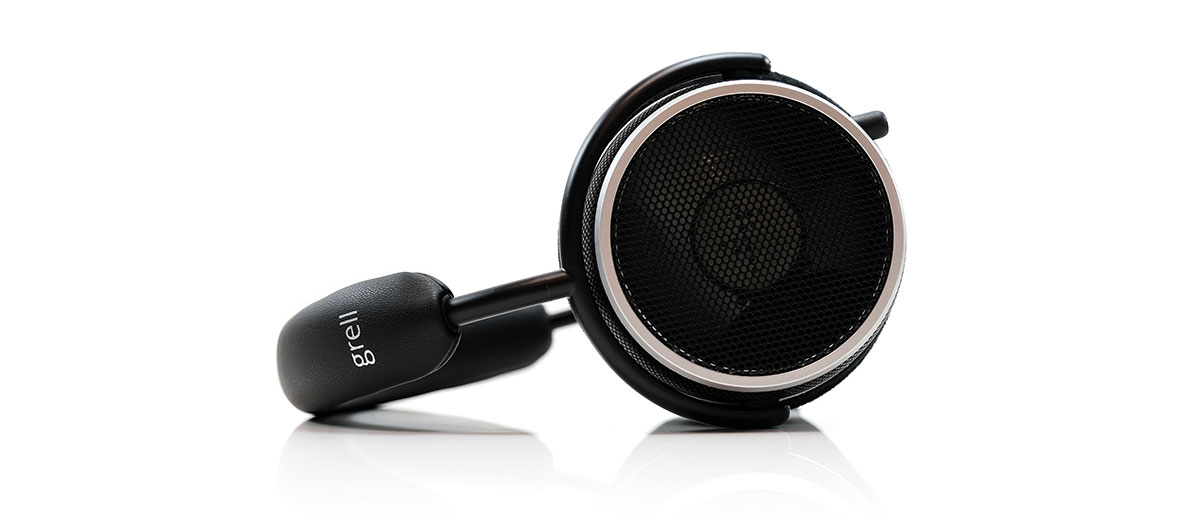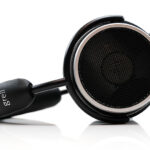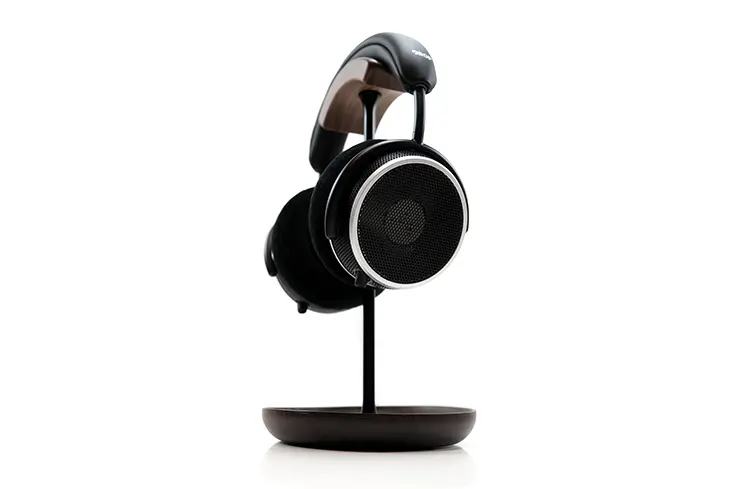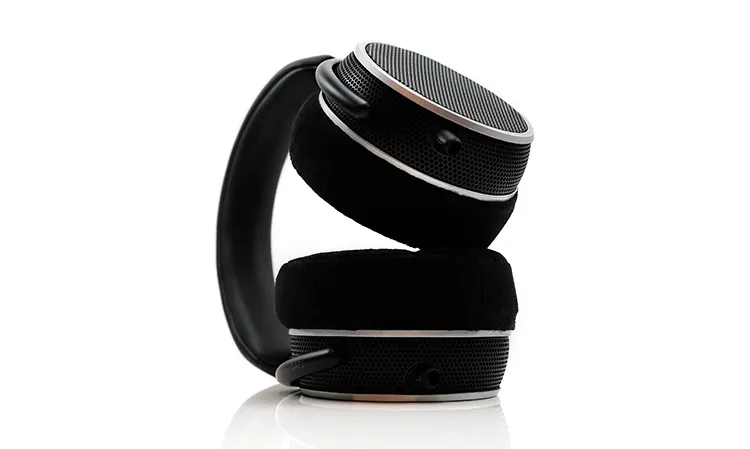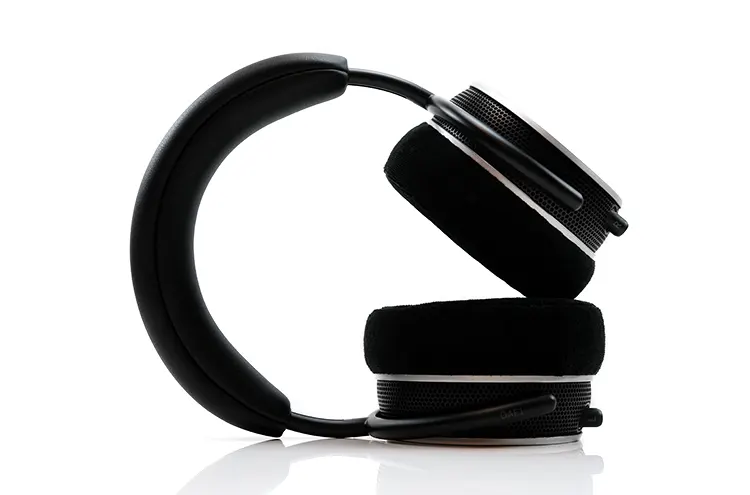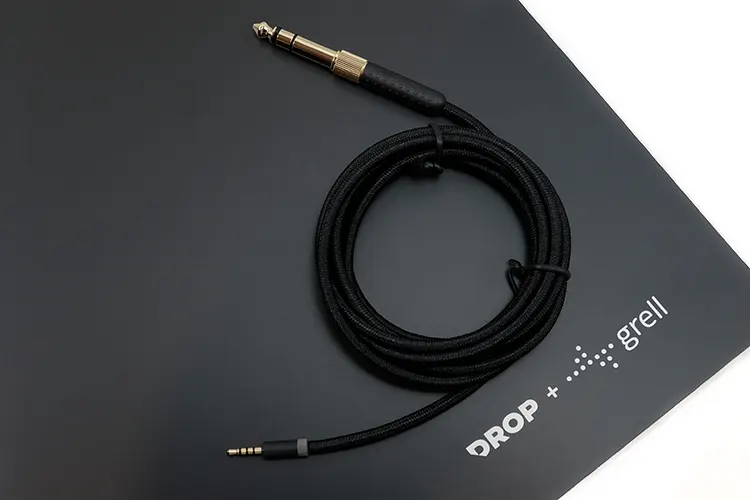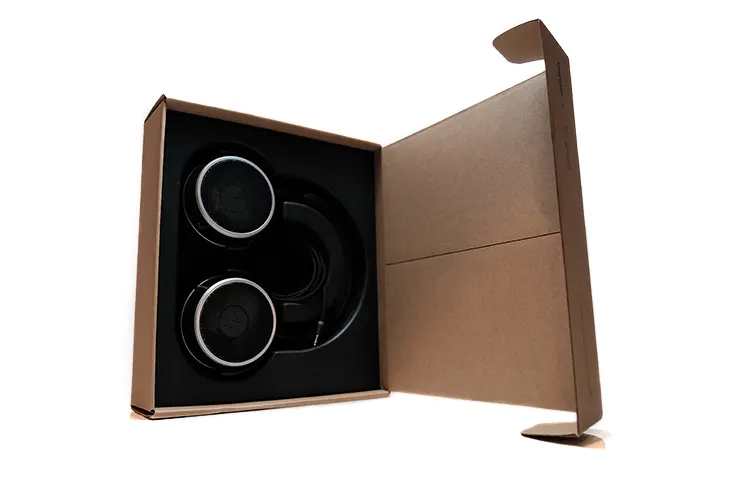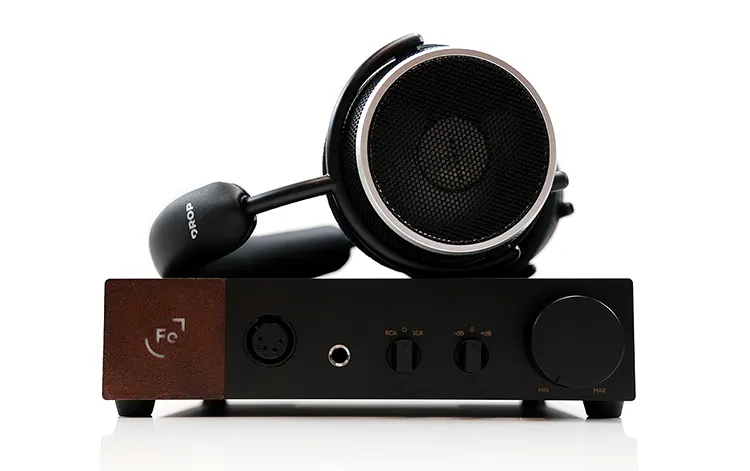Today, Marcus reviews the Drop + Grell OAE1, a set of headphones with a unique open-back driver configuration for an ultra-expansive soundstage. They are currently priced at $199 with an SRP of $299.
Disclaimer: This sample was sent to me in exchange for my honest opinion. Headfonics is an independent website with no affiliate links or services. I thank Drop and Grell for their support.
Click here to learn more about Drop products previously reviewed on Headfonics.
This article follows our current scoring guidelines which you can read in more detail here.
Some may have never heard of Axel Grell, the designer behind the collaborative Drop + Grell OAE1.
However, you will have heard of Sennheiser before. I am pretty sure most of you have either tried, owned, or heard of the HD 600, HD 800, or the HD 580 Precision to name but a few of the company’s iconic headphones.
If you have then you have participated in many of Axel Grell’s projects as the Chief Engineer of Sennheiser during that time.
And now, beyond Sennheiser, he has become a brand name in his own right with Grell Audio, out of which we now have the high-profile OAE1 open-back dynamic driver headphones.
Promising to deliver one of the widest soundstages ever designed for a very affordable current price of $199 (cheers Drop!), the OAE1 is characterized by impressive design qualities and a spacious staging capability ideal for grandeur recordings.
I didn’t review the original Signature Edition OAE1, so I am coming to the ‘regular’ version with an open mind. That should be helpful for those thinking of buying the new version for the first time.
Features
The OAE1 is a set of open-back single Biocellulose dynamic driver headphones with an impedance rating of 38Ω and an SPL of 106 dB (at 1 kHz 1 VRMS) making it relatively easy to drive though from my testing it does shine with improved power.
The primary purpose of the OAE1 is to create an extremely wide and spacious sound stage, characteristics that were the hallmark of Axel Grell’s iconic but decidedly more expensive HD 800.
The more specific term applied here is “Front oriented diffuse field equalization.” This phrase refers to a frequency response adjusted to match the sound characteristics of a “diffuse field” where sound arrives from all directions.
In the case of the OAE1, the ‘Front orientated” aspect means a particular emphasis on sound coming directly from the front of the stage to ideally create a more natural listening experience.
To achieve this, at least in part, Axel pushed the driver right to the edge of the cup facing forward towards the ear (in front) rather than the classic direct into the ear and in an even more extreme position than slanted options such as the Ultrasone Edition 15.
To optimize the acoustical environment within which the drivers operate, Grell designed the earcups with mostly open metal mesh combined with a woven stainless steel acoustic-damper mesh that allows sound waves to pass through with minimal interference.
Design
I have to remind myself at times that I am handling a $299 set of headphones here. The OAE1 aesthetics make it look more expensive than it’s price point.
Arguably, it’s an understated 180-degree articulating design with a mix of mostly black with a dash of silver on the cup rings, nothing overly grandiose or colorful but that in itself is a plus. I would call this classical urban minimalist with clean lines and suitable material choices.
The OAE1 form factor is a classic round-shaped open-back earcup with a dense set of slightly wedged replaceable velour earpads on the inside and those open steel mesh grills on the outside.
The rest of the material choices are die cast zinc for a hefty yoke, and spring steel combined with a faux leather outer for the headband which is nothing special in terms of quality but I do like its contouring and clean branding.
The inside of the OAE1 cup is probably the most indicative of the driver design with its non-conformist contouring to accommodate the driver positioning looking almost akin to a waterfall measurement chart.
Strong white channel markings similar to how AKG did it years ago are a welcome finish for visually impaired listeners.
However, since the OAE1 is dual entry but comes with a single-entry cable it is perhaps less relevant but should you wish to go dual entry at least you will know with ease which channel is which.
Comfort
I am aware of the major clamping complaint from the OAE1 Signature Edition but sadly I have no context as to how much better the newer OAE1 version is.
Coming fresh to the regular OAE1 I would say the clamping is tight but not super tight. Firm is the operative word here, mitigated by the soft velour and memory foam finish of the fairly deep pads.
I was able to get an hour or two straight listening with the OAE1 before I felt I needed a break. It is a lateral bias clamp with a small hotspot on the single headband for vertical pressure but you can reduce the effect slightly by lengthening the headband out a bit.
I found that lengthening the band a little more than I normally would help soften the straightjacket feel of the OAE1 clamp and made it more comfortable in the long run.
I am pretty sure after a few months of solid use the pads will also soften a little, particularly around the stiffer edges where the stitching might be.
The good news is that the clamp holds the OAE1 securely in place, which, given the sweet spot positioning of the driver inside the cup, is a bonus. Cup placement on your head can affect the sound signature of the OAE1 so you do not want it moving around a lot.
At 375g it is not the lightest headphone but because of the lateral clamp and pads, you will not really get the feedback of a heavy set of headphones. They are not insubstantial but definitely not planar headphones levels of heft.
Stock Cable
The OAE1 comes with a 1.8m silver-coated OFC cable wrapped in a reasonably flexible black nylon jacket giving it a nice and easy handling experience.
It is terminated with a 3.5mm TRS jack to a 2.5 mm TRRS connector and accompanied by a 6.35mm converter. It is finished as a single-entry single-ended cable though you will notice that the OAE1 is a dual-entry cup.
Not to fret, you can slot this cable in either side and it will work just fine with what I presume is a connecting wire tucked into a groove on the underside of the yokes. If you fancy going dual-sided (and balanced) then you can with a cable of your choice with matching 2.5mm TRRS connectors.
Do I wish it came with dual-sided and balanced 4.4mm or XLR? Yes, because of the superior channel separation I often find in balanced amplification output, a feature that could enhance the spatial width and dynamic range of the OAE1’s performance.
Then again, this is a $299 headphone so compromises have to be made somewhere and this is probably one of them.
Packaging & Accessories
And this is another compromise of sorts though to be honest, I have no complaints here considering the price point.
The Drop + Grell OAE1 packaging is frugal but functional with a relatively slim and wide form factor and a minimalist black vinyl sleeve with a picture of the cups and branding. It matches the minimalist vibe of the headphone’s design to a tee.
The inner box might be recycled cardboard packaging but they do a decent job of protecting the headphones which are neatly presented in a small sunken black tray inside.
You get nothing more than that other than the cable and a rather oversized but attractively designed branded user manual in matching black.
Sound Impressions
The following sound impressions were completed using a mix of the iBasso DC-Elite, Chord Electronics Mojo 2, and the desktop Ferrum OOR/Hypsos with the WANDLA GSE for decoding.
As much as possible the pads were positioned centrally, meaning my ears were not too close to the driver.
Summary
Probably the best one-word description of the OAE1 sound signature is ‘different’. I could elaborate further with terms such as unique and convention-challenging without resorting to absolutist descriptors such as good and bad.
For some, the OAE1 is a technical soundstage marvel with admirable staging depth and superior spaciousness to some of its competitors including the Audeze MM-100, the HIFIMAN Deva Pro, and even the iconic HD 650.
For others, it will sound overblown on the bass, softish through the mids, and lacking in clarity when compared to the aforementioned headphones. The truth for most might lie somewhere between those two competing opinions.
There is no denying that Axel has produced a very unique open soundstage with the OAE1. At this price point, the OAE1’s unique driver positioning and acoustical design deliver better macro soundstage performances than my chosen comparison headphones (see in more detail on page 3).
Where it lacks is an adequate level of lower treble fill to tease out some necessary contrast in instrumental and vocal timbre and act as a counter to its heavily elevated bass shelf.
You could argue this helps produce a very smooth tonal quality allowing it to sail through rougher recordings where the MM-100 and DEVA Pro might be less forgiving. For others, the lack of contrast might reduce vocal vibrancy and percussion bite.
Where the OAE1 starts showing its ability is with neutral amps with good power that keep a tight lid on bass bloom and enhance the treble presence.
Also, the OAE1 enjoys recordings where ‘size matters’ such as ambient synthwave and classical recordings meant to sound like they are delivered live in an arena rather than a studio.
Frequency Response
A conventional reading (and listen) would tell you this is a heavy and deep frequency response on the lows with significant bass bloat up to 500Hz, a set of lower mids that sails below neutral, and a heavily accentuated ear gain region from 2-5k.
You will also notice a subsequent heavy dip in the OAE1’s lower treble to 8k and a gentle boost into the upper treble.
All the above creates a smooth, fulsome bass-weighted sound signature that can work for some recordings but might seem overblown with warm amps and DACs or recordings with a high level of sub-100Hz bass energy.
What I have to elaborate a little on is the OAE1 gain levels from 2-5k which on paper seem north of neutral from 3-5k and generally speaking there is some decent presence there. However, for lower pitching vocal performances that fall a little lower around 1-2k, the FR is a little south of neutral.
Combined with the elevated bass shelf and the 6-8k dip lower pitched voicing can get masked a little from the bass warmth or lack in bite and presence if registering higher, such as some soprano voices.
What I did notice however, if you either EQ down that shelf by 3-4 dB from 50Hz up to 300Hz then maybe 1-2 dB beyond to 500Hz you can balance the FR out a bit more and allow the mids more space to show what they are capable of.
Pick a powerful and clean-sounding solid-state source that is much flatter on the lows or a recording that does not exhibit a heavy bass mix then the OAE1’s wings feel less clipped.
Staging & Dynamics
And this is where the OAE1 really can show off what it is designed and tuned to deliver.
Even so, it will only really get in the staging groove with recordings that contain plenty of space or are mixed to create the perception of space. More familiar descriptors such as “arena-like” come to mind. It will not magic up space where none exists.
Staging depth can be excellent when controlled, staging width is impressive, and the OAE1 can excel on a macro level with ‘big’ sounding recordings.
I ran a few classic Charlotte Church oratorical performances through the OAE1 and compared it with the DEVA Pro, HD 650, and the MM-100 and none of them could come close to the sense of scale the OAE1 brought to each performance.
What it lacked was strong central imaging clarity that the other more conventional headphones brought to the performances. Vocals were more intimate and clearer so that is where my attention fell.
With the OAE1, my focus felt divided, but in a good way. Imaging cues far left and far right resonated more in my aural memory than those competing headphones. Immersive yes, slightly less resolving, also yes, but definitely grander sounding.
Click on page 2 below for my recommended pairings and selected comparisons.

